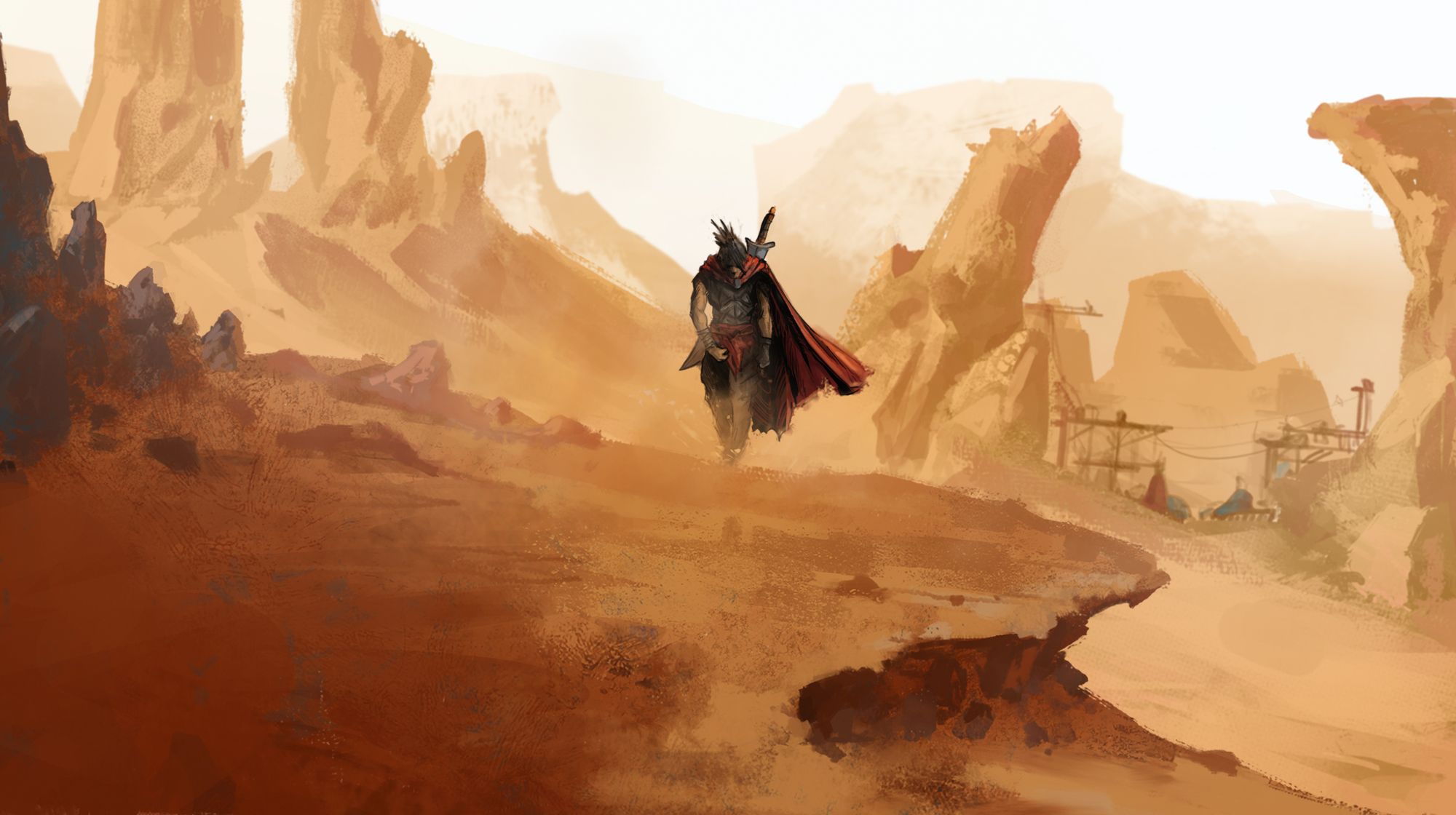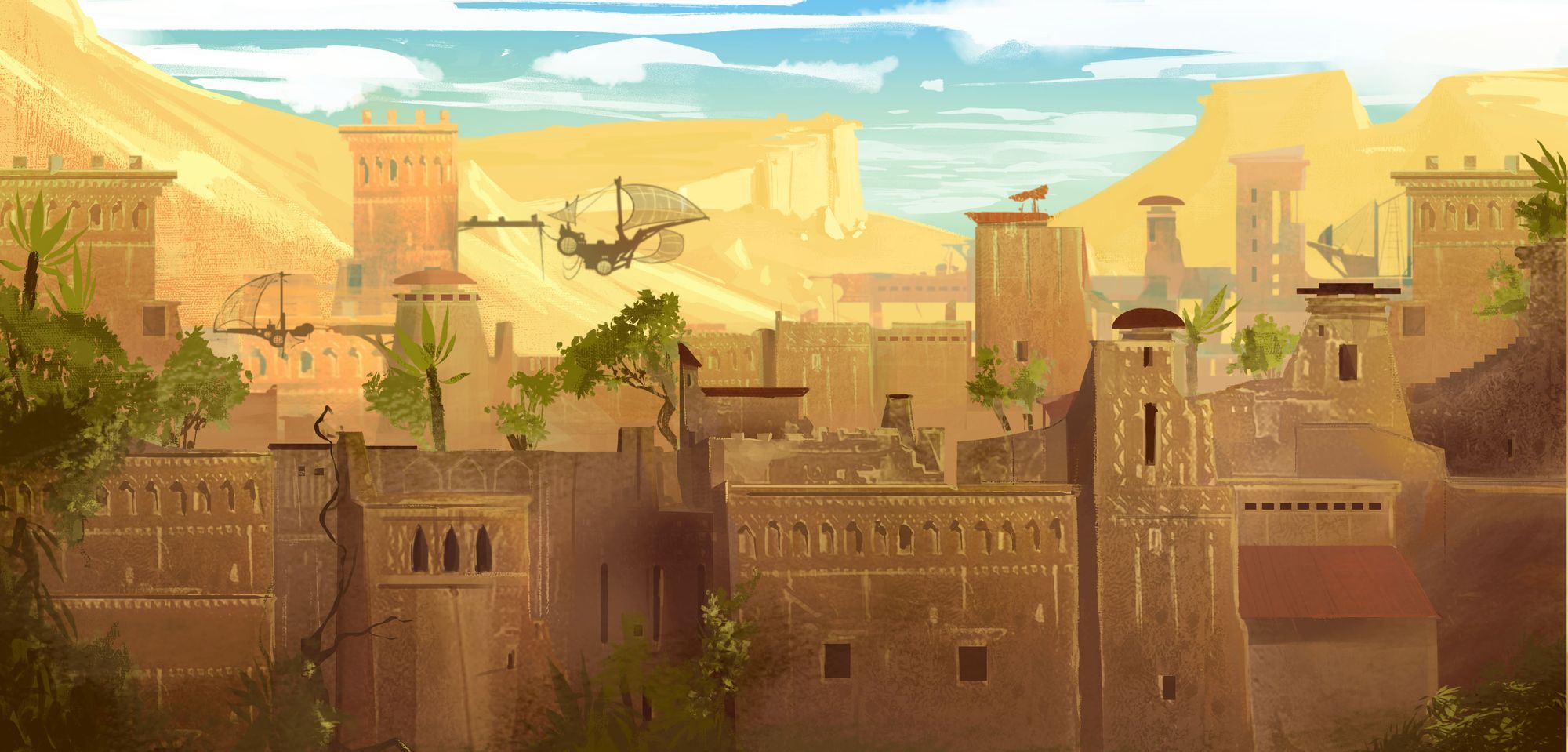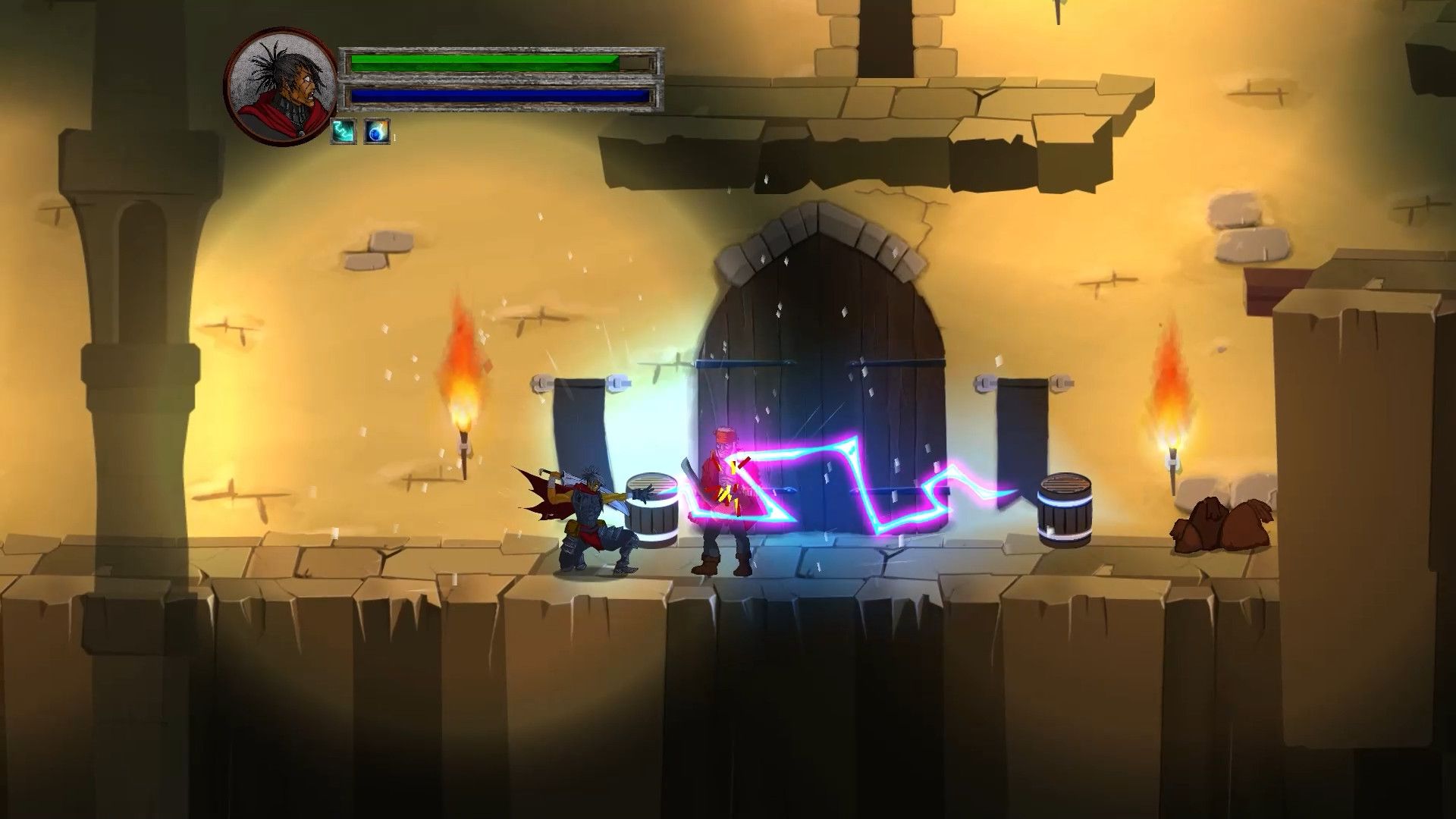Shadow of the Guild Review
An interesting story is hurt by a significant lack of polish

Indie games have seen an undeniable renaissance in the last half-decade, with 2D action platformers being one of the main genres to benefit. Outstanding experiences like Dead Cells, Hollow Knight, and Celeste have raised the bar for what fans expect from small teams and, fair or not, have become the measuring stick for all others.
So in reviewing Shadow of the Guild, I couldn't help but long for the tight, enjoyable gameplay those other titles bring to the table. There is promise in this stylish game from French developer Guild Studio, with a compelling political mystery at its core. But the minute-to-minute action largely lets down the strong story, and a significant lack of polish distracts players from enjoying what is on offer.
The world in which Shadow of the Guild takes place is said to have been inspired by the Prince of Persia titles, and it is easy to see that influence. The art style and design of the world are at the top of the game's strong points, with playable areas seemingly carved out of sand dunes and rocky mountains. This is a fantasy world for sure, filled with floating fortresses and pirate airships, assassins and guilds, runes and magic.
It's clear that much effort went into designing the look of the game, with cinematics made in a painterly style that fits the aesthetic perfectly. The world and backgrounds are peppered with details that make the environments feel fleshed out and alive, even if the denizens are static more often than not. I had a strong NES-era Ninja Gaiden vibe from the early cutscenes, which is absolutely a compliment, and they were enjoyable to watch throughout the game.

Based on a series of books penned by studio founder and principal developer Robin Buisson, the story puts you in the shoes of Yaran. An assassin, referred to as a Shadow, he is an enforcer in the employ of the Rain Merchant's Guild. In a world starved for water, the guild pilots airships that harvest clouds and lightning, controlling the supply of water and making vast fortunes selling it to the inhabitants of the land.
But the guild's work is threatened by the Eastern Empire and its leader, who is rumored to be working on cloud-harvesting machines that would destroy the Guild’s hegemony. You are tasked with traveling to the Empire’s lands and learning the secrets of their plans. But before you can depart, the Guild’s floating fortress is attacked by pirates, whom you must fend off in the game’s tutorial mission. Afterward, doubts are raised about why the pirates attacked, who sent them, and if there is a traitor in your midst. You are tasked with solving this mystery in addition to your original mission, and the resulting tale of political intrigue and twisted motivations is the game’s strongest feature.
The story plays out mostly with in-engine panels of the type where static portraits of the characters sit next to their dialogue. The portraits are well done and convey some emotion. The dialogue is generally well-written, fleshing out the characters as much as your brief encounters allow, though some translation errors and weird positioning of the text can be distracting. Observations by your character as you move through the world are presented in a box at the bottom of the screen but can be hard to read at times. Still, the story is certainly the highlight of the game, and you’ll want to hurry through the action to get to the next bit.
I wanted to like the combat more than I did, and the run-of-the-mill enemies are actually better than the bosses. You have melee attacks, magical abilities that are your long-range attacks, and occasionally items at your disposal. You can sneak up on enemies to stealth-kill them in one shot, with an accompanying bloody animation in the same style as the cutscenes. These are fun to see the first few times but quickly become annoying and there is no way to turn them off.

Your character is quite well-animated, and it feels good to hack away at enemies with your high and low attacks. You have a shield to protect yourself, and your magical abilities like lightning bolts, a magical tornado, and several others in between that you fire off at the baddies. These expend your mana points so you can’t completely cheese them on every enemy and generally mix well with the melee strikes.
The RPG elements advertised in the game’s liner notes are found in three upgrade trees, where you can use points gained from leveling up through combat to increase stats or obtain those new magical attacks. Each of these trees enhances one category of melee attacks, spellcasting, or stealth killing, thus nominally allowing you to choose how you play the game. In playing through the whole game, however, I only acquired enough level-ups to acquire about 6 upgrades, about one-third of what is on offer.
Unfortunately, these are the highlights of the combat. The enemies, especially the bosses, are somewhat oddly animated and just don’t look well put together when they move. Their attacks are predictable and sometimes you will take damage when it looks like you shouldn’t, while jumping over them or being a considerable distance away. Combat just isn’t all that exciting, especially with the bosses, who have a ton of hit points and aren’t especially dynamic in their attacks. Thus the way to defeat them mostly degenerated into running from their magic attacks and spamming the heavy jumping attack to chip away 60 HP at a time until they were dead.
Granted, there were times where I had very low HP and no items, and I had not chosen to upgrade to some of the heavier magic attacks, so others may have a slightly different take on the bosses. But this isn’t a rogue-lite, so you don’t come back to get additional upgrades later on. The only way to get all the upgrades is to beat the game, upon which you are rewarded with “God Mode” (their words) which gives you all abilities from the upgrade trees. The next New Game you start gives you all that from the very beginning, which I have to imagine will break the game and make subsequent playthroughs much too easy. The enemies and bosses are not especially difficult or enjoyable, and I found myself wishing the fights were over well before they were.
Traversal is also somewhat problematic in many small ways. Rolling forward and backward is meant to be your dodge move as well as to get under low objects. It is controlled by holding down the stick instead of a face button, so if you don’t have the stick held just right, you won’t go into the roll animation. Jumping is also janky, as some platforms that should be reachable can’t be grabbed. There is also a grappling hook that takes you to vertical climbable walls, but jumping from one to another is frustratingly inaccurate, often causing you to fall instead of springing toward the next wall. And the devs employ the “push a big block toward a high platform so you can climb up” mechanic, but if the block is off by even a pixel or two from where the game wants it, you can’t jump up without repositioning it.

These are all small things but they add up to make the game more frustrating than it should be, and hurt the overall experience to a large degree. Perhaps most glaring in all this lack of care and attention to detail, I found several points throughout the 6-ish hour playtime where dialogue simply was not entered into the game. Placeholder text shows up on the screen, things like “<L2_ SC4_...>", where it should have been your character’s thoughts or even dialogue in a cutscene, and they just forgot to put in the real text. I’m quite aware of the dearth of resources present at most indie studios, but just playing through the game clearly reveals these problems, rendering them inexcusable in my mind.
A definite lack of polish holds the game back from being more than the sum of its parts. The developers have said this is just the beginning of the Shadow’s tale, so there is certainly room for this intriguing story to be partnered up with improved gameplay. I wanted to like it more than I did, but as the game stands, I can only recommend it for the die-hardest of 2D actioner fans who are looking for a story with their action and a unique graphical style to enjoy.
